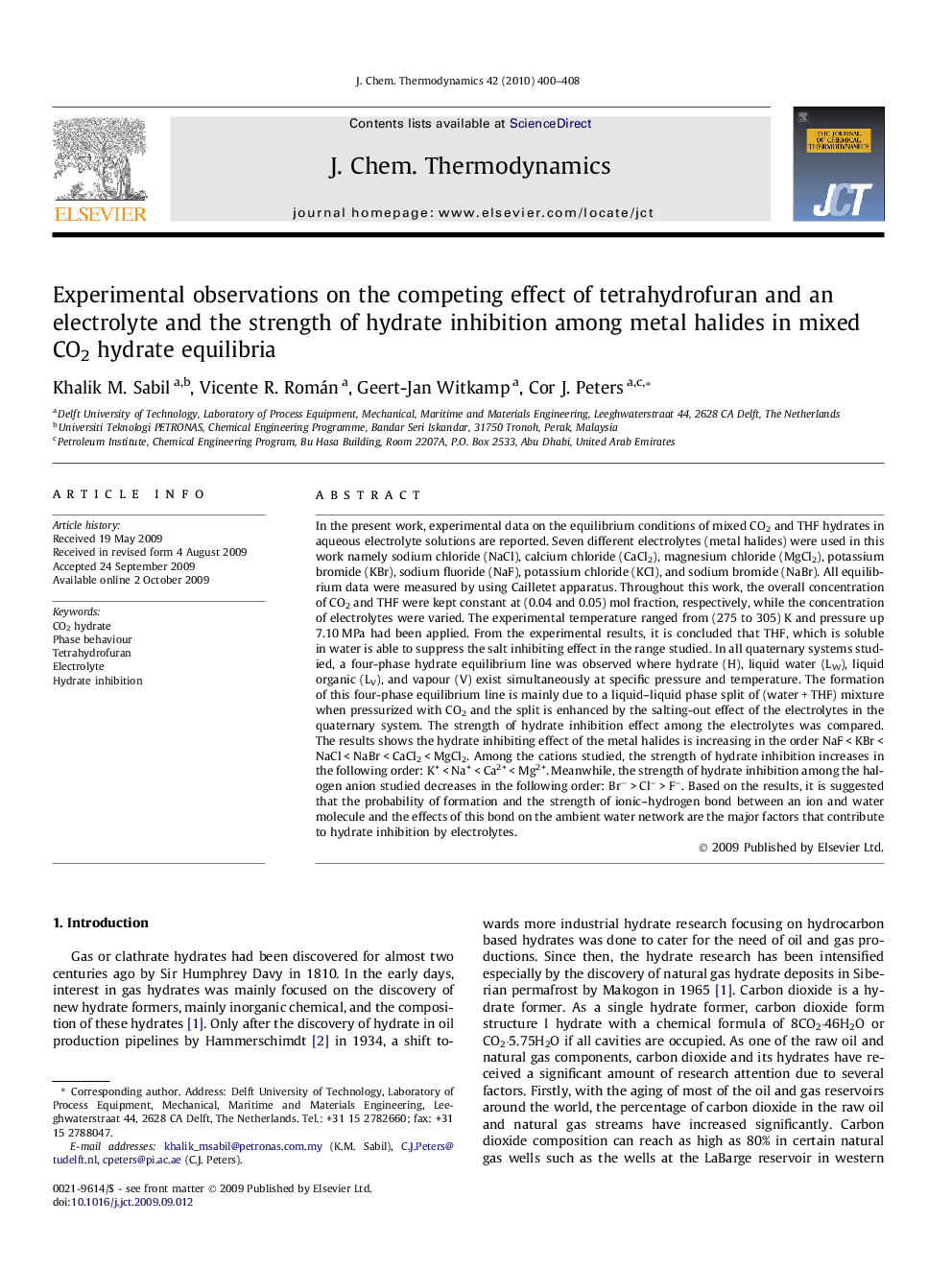| کد مقاله | کد نشریه | سال انتشار | مقاله انگلیسی | نسخه تمام متن |
|---|---|---|---|---|
| 217041 | 1426291 | 2010 | 9 صفحه PDF | دانلود رایگان |

In the present work, experimental data on the equilibrium conditions of mixed CO2 and THF hydrates in aqueous electrolyte solutions are reported. Seven different electrolytes (metal halides) were used in this work namely sodium chloride (NaCl), calcium chloride (CaCl2), magnesium chloride (MgCl2), potassium bromide (KBr), sodium fluoride (NaF), potassium chloride (KCl), and sodium bromide (NaBr). All equilibrium data were measured by using Cailletet apparatus. Throughout this work, the overall concentration of CO2 and THF were kept constant at (0.04 and 0.05) mol fraction, respectively, while the concentration of electrolytes were varied. The experimental temperature ranged from (275 to 305) K and pressure up 7.10 MPa had been applied. From the experimental results, it is concluded that THF, which is soluble in water is able to suppress the salt inhibiting effect in the range studied. In all quaternary systems studied, a four-phase hydrate equilibrium line was observed where hydrate (H), liquid water (LW), liquid organic (LV), and vapour (V) exist simultaneously at specific pressure and temperature. The formation of this four-phase equilibrium line is mainly due to a liquid–liquid phase split of (water + THF) mixture when pressurized with CO2 and the split is enhanced by the salting-out effect of the electrolytes in the quaternary system. The strength of hydrate inhibition effect among the electrolytes was compared. The results shows the hydrate inhibiting effect of the metal halides is increasing in the order NaF < KBr < NaCl < NaBr < CaCl2 < MgCl2. Among the cations studied, the strength of hydrate inhibition increases in the following order: K+ < Na+ < Ca2+ < Mg2+. Meanwhile, the strength of hydrate inhibition among the halogen anion studied decreases in the following order: Br− > Cl− > F−. Based on the results, it is suggested that the probability of formation and the strength of ionic–hydrogen bond between an ion and water molecule and the effects of this bond on the ambient water network are the major factors that contribute to hydrate inhibition by electrolytes.
Journal: The Journal of Chemical Thermodynamics - Volume 42, Issue 3, March 2010, Pages 400–408